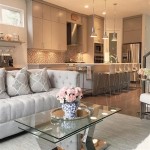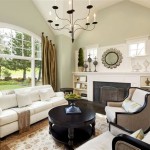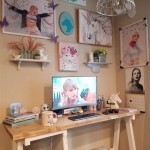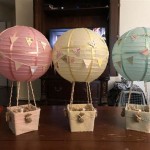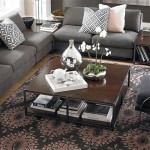Over The Fireplace Decorating Ideas: Enhancing Your Hearth's Focal Point
The fireplace, traditionally a gathering place for warmth and camaraderie, often serves as a central architectural feature within a room. Consequently, the space above the fireplace, frequently referred to as the mantel or firebox, presents a prime opportunity for decorative enhancement. Thoughtful decorating can transform this area from a mere structural component into a striking visual focal point, reflecting personal style and complementing the overall aesthetic of the living space. Successful over-the-fireplace decor requires careful consideration of scale, balance, and the existing interior design scheme.
Effective fireplace decoration involves more than simply placing items above the mantel. It necessitates understanding the architectural style of the fireplace itself, the dimensions of the surrounding room, and the desired atmosphere. A minimalist approach might suit a modern setting, while a more elaborate display could harmonize with a traditional or rustic design. The chosen decorative elements should enhance the fireplace's inherent characteristics without overwhelming the space or detracting from its primary function.
Selecting a Central Artwork or Mirror
One of the most impactful approaches to over-the-fireplace decor is the strategic placement of a large-scale artwork or mirror. The selection should align with the room's established color palette and style. For instance, a vibrant abstract painting can introduce a pop of color into a neutral-toned room, while a serene landscape can evoke a sense of tranquility in a more traditional setting. The size of the artwork or mirror is crucial; it should be proportionate to the fireplace and the surrounding wall space. A piece that is too small will appear insignificant, while one that is overly large can overwhelm the area.
A mirror, in addition to its aesthetic appeal, offers the functional benefit of reflecting light, thereby enhancing the brightness and perceived spaciousness of the room. Beveled mirrors, ornate frames, or unique shapes can add visual interest, turning the mirror into a decorative element in its own right. Strategically positioning a mirror to reflect a window or a particularly appealing part of the room can further amplify its positive effects. Consider the reflection itself and ensure it complements the overall design. Avoid reflecting cluttered areas or undesirable views.
When hanging artwork, ensure it is securely mounted and positioned at a comfortable viewing height. Ideally, the center of the artwork should be roughly at eye level. A level is essential to guarantee a straight and balanced installation. For heavier pieces, professional installation may be necessary to ensure safety and prevent damage to the wall. Consider a picture rail system to allow for easy swaps and adjustments without causing further damage to the wall.
The choice between artwork and a mirror often depends on personal preference and the specific needs of the room. Artwork allows for greater expression of individual style and taste, while a mirror offers practical benefits such as increased light and a sense of expanded space. Weighing these factors will guide the selection process and ensure a cohesive and visually appealing outcome.
Balancing Symmetry and Asymmetry
The concept of balance is fundamental to successful over-the-fireplace decorating. Symmetry involves arranging identical or very similar objects on either side of a central focal point, creating a sense of order and formality. This approach often works well with traditional or classic interior designs. For example, matching candlesticks, vases, or sconces placed symmetrically on the mantel can create a visually pleasing and balanced composition.
Asymmetry, on the other hand, involves arranging objects of different sizes and shapes in a way that creates visual interest without duplicating elements. This approach can be more dynamic and visually engaging, often working well with modern or eclectic interior designs. Achieving balance in an asymmetrical arrangement requires careful consideration of the visual weight of each object. Larger or more visually striking objects should be counterbalanced by smaller or less visually dominant ones.
To achieve asymmetrical balance, consider placing a tall vase with flowers on one side of the mantel and a collection of smaller framed photographs or decorative objects on the other side. The key is to distribute the visual weight evenly across the mantel, creating a sense of equilibrium. Experiment with different arrangements until a balanced and aesthetically pleasing composition is achieved. Photography can be a helpful tool in assessing balance and composition from a distance.
Regardless of whether a symmetrical or asymmetrical approach is chosen, maintaining a sense of visual harmony is crucial. The colors, textures, and styles of the objects should complement each other and the overall design of the room. Avoid cluttering the mantel with too many disparate objects, as this can detract from the overall aesthetic. A well-curated collection of carefully chosen items will create a more impactful and visually appealing display.
Consider using vertical elements to create height and horizontal elements to create width. This adds depth and visual interest to the arrangement. Varying the heights of the objects can also contribute to a more dynamic and engaging composition. Overlapping elements can also create a sense of depth and visual interest. By layering objects in front of and behind each other, a more complex and visually rich display can be achieved.
Utilizing Textural and Material Contrast
Introducing textural and material contrast can elevate the visual interest of over-the-fireplace decor. Combining different textures, such as smooth glass, rough wood, and soft textiles, can create a tactile and visually stimulating display. Similarly, mixing different materials, such as metal, ceramic, and natural fibers, can add depth and complexity to the overall composition. The goal is to create a visually engaging arrangement that appeals to the senses.
For example, a mantel made of smooth, polished stone can be contrasted with rustic wooden candlesticks or woven baskets. A collection of ceramic vases with varying textures can be arranged alongside metal sculptures or framed artwork with textured mats. The juxtaposition of different textures and materials creates a dynamic and visually rich display that draws the eye and invites closer inspection.
When selecting materials, consider the overall style of the room and the existing finishes. If the room has a predominantly modern aesthetic, incorporating sleek metal and glass elements can enhance the contemporary feel. If the room has a more rustic or traditional aesthetic, incorporating natural materials such as wood, stone, and woven textiles can complement the existing design.
Pay attention to the color palette when incorporating textural and material contrasts. Neutral colors can create a subtle and sophisticated effect, while bolder colors can add a pop of visual interest. However, it is important to maintain a sense of balance and harmony. Avoid overwhelming the space with too many disparate colors and textures. A well-curated collection of carefully chosen materials and textures will create a more impactful and visually appealing display.
Consider incorporating natural elements, such as plants, branches, or stones, to add a touch of organic texture to the over-the-fireplace decor. These elements can soften the hard lines of the fireplace and create a more inviting and welcoming atmosphere. Additionally, consider seasonal decorations, such as pine cones and evergreen branches during the winter months, or colorful flowers and foliage during the spring and summer months, to add a touch of seasonal charm.
Lighting also plays a crucial role in highlighting the textures and materials used in the over-the-fireplace decor. Strategically placed spotlights or sconces can emphasize the unique characteristics of each object and create a warm and inviting ambiance. Experiment with different lighting techniques to find the best way to showcase the textures and materials used in the display.
Ultimately, successful over-the-fireplace decorating is about creating a visually appealing and harmonious composition that reflects personal style and complements the overall aesthetic of the room. By carefully considering scale, balance, color, texture, and material, a stunning focal point can be created that enhances the beauty and functionality of the living space.

How To Decorate Above A Fireplace Worthing Court

10 Fireplace Mantel Decorating Ideas Full Service Chimney

Mantel Decorating With A Tv 10 Ideas And Tips Nina Hendrick

27 Best Above Fireplace Decor Ideas Living Room

45 Fireplace Decor Ideas To Add Warmth And Style Your Space

Fireplace Decor Hearth Design Tips

15 Above Fireplace Decor Ideas That Look Amazing In 2025

14 Wonderful Fireplace Decor Ideas For Your Mantel Foyr

My Simple And Cozy Fall Mantel Fireplace Decor Worthing Court Diy Home Made Easy

56 Fireplace Decor Ideas For Warmth And Style Year Round

